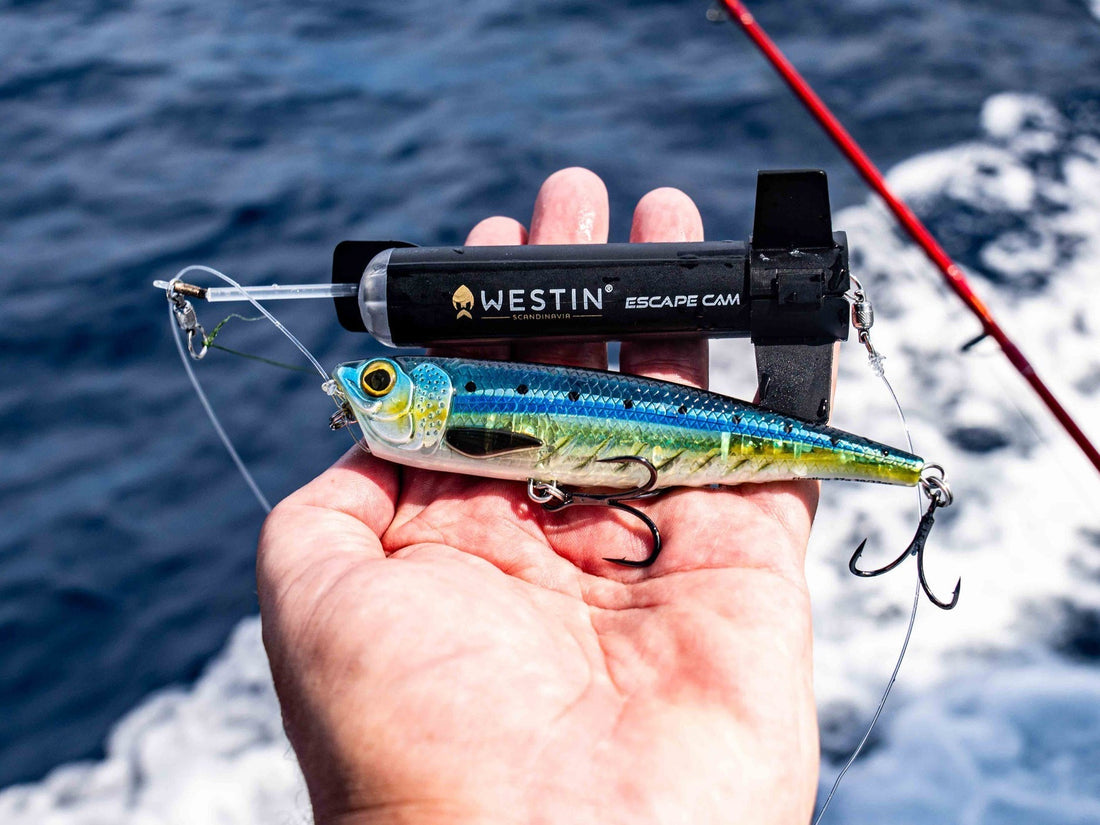
Capture Epic Footage With a Fishing Lure Cam!
When you make the switch to either technical or social media-focused fishing, it's no longer just about the catch—it’s about the footage. Whether you're building a personal highlight reel, growing your YouTube channel, or fine-tuning your technique, underwater fishing cameras like the Westin Cam are changing the game. These tiny, powerful tools are unlocking an entirely new way to see what’s happening beneath the surface, in real-time or after the fact. And when paired with your favorite lures, the result is nothing short of cinematic.
So, how do you capture epic footage using a fishing lure cam? Let’s break it all down—from choosing the right camera and setup, to optimizing your conditions and reviewing your shots like a pro.
The Rise of Underwater Lure Cameras
For decades, anglers could only guess how fish were responding to their presentations. A missed strike was chalked up to bad timing, a soft bite, or bad luck. But now, with lightweight underwater cameras like the Westin Explore Cam and Escape Cam, anglers can see every moment in high-definition detail. Did the fish swipe and miss? Did it spook at the last second? Was your lure doing something weird?
These cameras don’t just capture content—they offer insights. And for creators, there’s no better way to stand out in a crowded space than by bringing audiences below the surface.
Choosing the Right Camera for the Job
Westin currently offers two models, each with its own strengths:

Westin Explore Cam: Ultra-compact and lightweight, this camera weighs less than a single AA battery. It’s the ideal choice for finesse setups or lighter lines, where drag and bulk can ruin a cast. It records in 1080p at 30 or 60 fps and is waterproof to an impressive 650 feet. With a runtime of just under 90 minutes, it’s great for short sessions or scouting bites across multiple spots. See Product

Westin Escape Cam: Designed for longer, more stable sessions, this slightly larger model offers up to 2.5 hours of recording time and includes built-in stabilization with a Y-fin, plus a dive lip to help it stay down during retrieval. It’s still compact at 1.4 oz and offers the same 1080p HD clarity, but is better suited for trolling or targeting deeper structures where current and speed can affect your footage. See Product
Rigging for Footage, Not Just Fish
To get the best video, placement matters. Mount the camera roughly 2 to 4 feet ahead of your lure. This spacing ensures the full action of the lure is captured in the frame, along with any fish that move in to investigate or strike. You want your camera close enough to catch the action, but not so close that it interferes with the lure’s natural movement.
Some anglers opt for inline rigging, where the camera is attached to the main line and the lure is trailed on a dropper or a regular fluorocarbon leader with a loop knot (loop knots excel at keeping the lure moving naturally). No matter the configuration, balance is key—especially if you’re casting and retrieving, rather than trolling.

The Escape Cam’s stabilizer fin helps keep the footage smooth during movement, especially when trolling at moderate speeds. If you’re using the Explore Cam, calmer waters or a slower retrieve will help reduce shake and blur.
Light, Depth, and Time of Day
Even the best camera can’t make up for bad lighting. Water filters out sunlight quickly, especially in deeper or murkier conditions. To maximize clarity and color, fish during the middle of the day when the sun is high. Clear, calm water with direct sunlight will provide the best contrast and visibility.
For ultra-clear freshwater lakes, you might be surprised how deep you can go and still get usable footage. In tannic or stained water, or if you're shooting in salt, staying shallower often produces sharper video with more accurate color rendering.

Speed: Fish Love It, Cameras Need It Balanced
Most trolling speeds range from 2 to 6 knots, and both Westin cams handle this range well. But if your goal is crisp footage, slower is better. Slower speeds allow the camera to stabilize between movements and capture smoother, more cinematic action. That said, if you're going for reaction strikes, balance the needs of your target species with the needs of your footage. You might only get one chance at a strike—and you’ll want that shot clean.
Reviewing and Editing Footage
Both Westin cameras are built with simplicity in mind. Once you retrieve the unit, footage can be reviewed quickly on your phone via an adapter or card reader. Trim out the dead zones and focus on moments of action—especially fish following your lure, missed strikes, or key hooksets. For content creators, this is gold.
To really impress your audience or analyze your own technique, consider adding commentary or overlays. What lure were you using? How deep was the strike? What did you change between casts that triggered a bite?
This turns your footage into something more than just a fish story—it becomes a tutorial, a trophy, and a teaching tool all in one.
A fishing lure cam like the Westin Explore or Escape Cam isn’t just a novelty—it’s a lens into a world we rarely get to see. Whether you're building content or becoming a better angler, these cameras unlock feedback and footage that’s impossible to replicate any other way.
So next time you head out, don’t just bring your rod—bring your fishing lure cam. The fish are out there, digging what you're putting down, and now you can prove it (or improve it).
